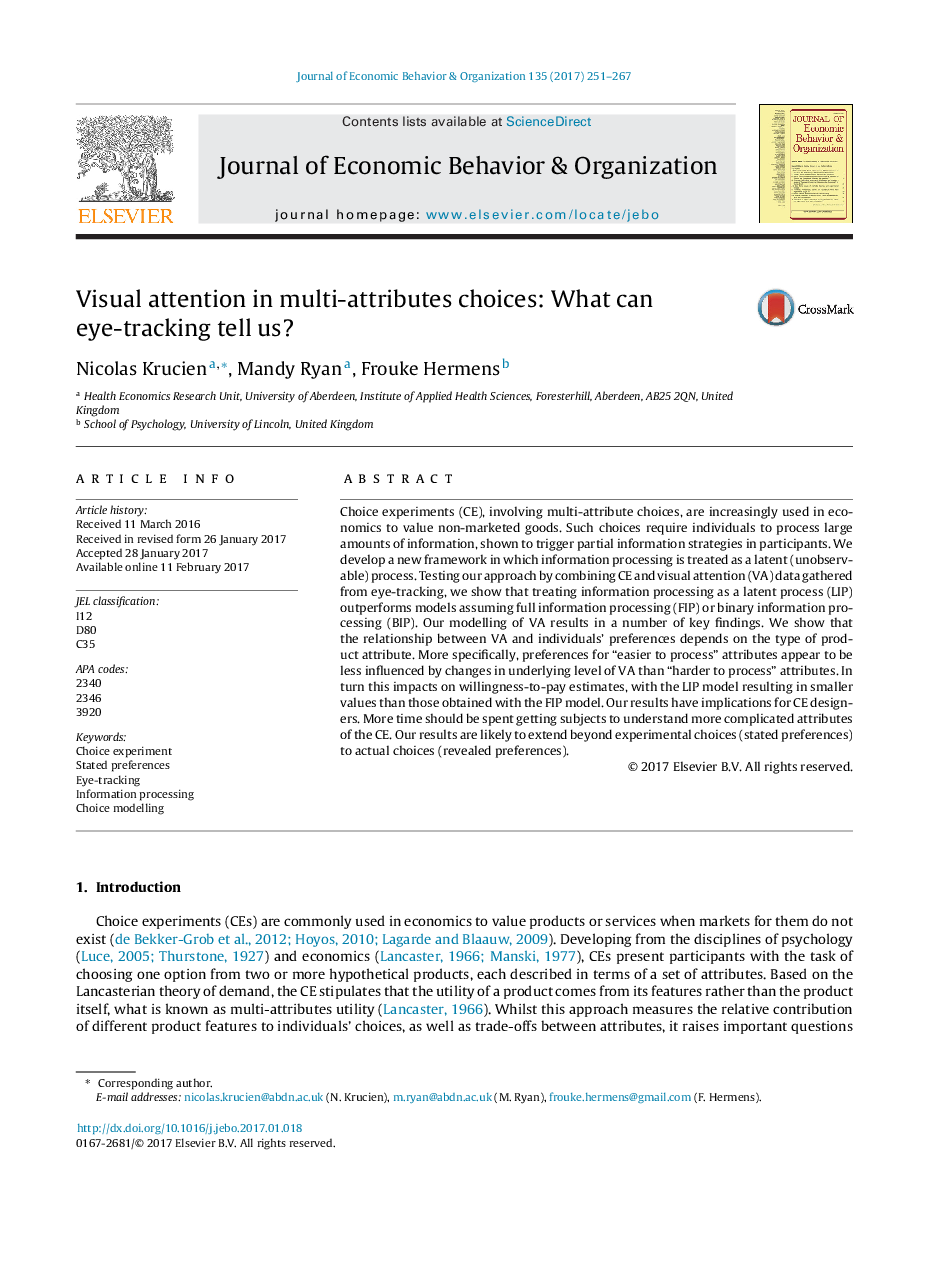| کد مقاله | کد نشریه | سال انتشار | مقاله انگلیسی | نسخه تمام متن |
|---|---|---|---|---|
| 5034595 | 1471632 | 2017 | 17 صفحه PDF | دانلود رایگان |
- Using eye-tracking we investigate the impact of visual attention on multi-attribute choices.
- Treating information processing as a latent process improves modelling.
- Welfare estimates are impacted, with latent modelling resulting in consistently smaller values.
- “Harder to process” attributes are more influenced by changes in visual attention.
- More time should be spent getting subjects to understand more complicated attributes.
Choice experiments (CE), involving multi-attribute choices, are increasingly used in economics to value non-marketed goods. Such choices require individuals to process large amounts of information, shown to trigger partial information strategies in participants. We develop a new framework in which information processing is treated as a latent (unobservable) process. Testing our approach by combining CE and visual attention (VA) data gathered from eye-tracking, we show that treating information processing as a latent process (LIP) outperforms models assuming full information processing (FIP) or binary information processing (BIP). Our modelling of VA results in a number of key findings. We show that the relationship between VA and individuals' preferences depends on the type of product attribute. More specifically, preferences for “easier to process” attributes appear to be less influenced by changes in underlying level of VA than “harder to process” attributes. In turn this impacts on willingness-to-pay estimates, with the LIP model resulting in smaller values than those obtained with the FIP model. Our results have implications for CE designers. More time should be spent getting subjects to understand more complicated attributes of the CE. Our results are likely to extend beyond experimental choices (stated preferences) to actual choices (revealed preferences).
Journal: Journal of Economic Behavior & Organization - Volume 135, March 2017, Pages 251-267
